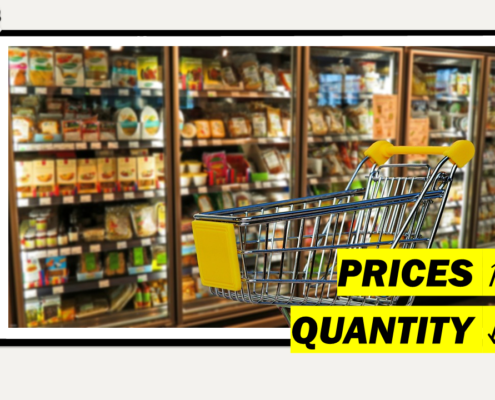 https://greenmarked.it/wp-content/uploads/2024/06/tim-mossholder-qq-8dpdlBsY-unsplash-scaled.jpg
1703
2560
Barbara Centis
https://greenmarked.it/wp-content/uploads/2022/01/LOGO-GREENMARKED-SITO-600x600.png
Barbara Centis2024-06-03 20:02:532024-06-03 20:36:43A World of Plastic: Soon to an End?
https://greenmarked.it/wp-content/uploads/2024/06/tim-mossholder-qq-8dpdlBsY-unsplash-scaled.jpg
1703
2560
Barbara Centis
https://greenmarked.it/wp-content/uploads/2022/01/LOGO-GREENMARKED-SITO-600x600.png
Barbara Centis2024-06-03 20:02:532024-06-03 20:36:43A World of Plastic: Soon to an End?March 21, 2024

Waste production is nowadays one of the main pressures on the environment. This is because of its many drivers (including economic and domestic activities) and its connected impacts, like the pollution of soil, emissions in the atmosphere, and exhaustion of energetic resources [1]. Waste reduction is therefore a priority and as such, it needs to focus on waste management but also on the overall lower waste production: using the principles of circular economy to inspire the future, is fundamental.
Many territories have worked in the past years with these goals in mind: one of them, is Trentino. In the recently published Report on Waste [2], it is stated how Trentino has reached a high standard for the quantity of waste sorting (average 79.1% in 2021) with some areas doing better than others (see Figure 1). Even if the quantity of recycled waste was high, the quality was not as much. The study has in fact shown how organic waste contained almost 6% of materials that should not have been there (like glass, metals, textile and non-biodegradable plastics).
The Report on Waste also shows how in the last years, sorting has increased from 16.3% in 2001 to 79.1% in 2021 (see Figure 1): the ambitious goal settled by the Law 152/2006 (65% of waste sorted) is long surpassed in the provincial territory. The non-recyclable waste component represents a little more of 18% of the waste while organic waste accounts for almost 19% and paper for 14%.
These important results show how in twenty years, thanks to the education and information of the citizens along with an efficient collecting system, Trentino has reached an excellent standard even if some work can still be done (as stated, in particular on the quality of the waste which is sometimes not appropriate). Sustainable waste management includes the integration of the circular economy: it is in fact necessary that each of us makes an effort to change their routine. The consumeristic society and the need for things “here- and – now” have increased the use of non-disposable items and our neglect for where the raw materials come from. The principles of circular economy invite us to reuse items and objects, to fix them when broken to not buy new ones unless we really need them. This will make us more aware of the impact they have and therefore that each of us has [2].

Fig 1: Waste Management in Trentino. Data from Rapporto Rifiuti Trentino 2022. Photo by GreenMarked, 2024.
The Report evaluates the environmental cost of E-commerce highlighting how buying online is an advantage for the environment only if the item cannot be found within 15 km from the consumer. It is obvious how E-commerce is posing a detrimental effect because of packaging: the global value of it is going to reach 28.6 billion dollars in 2027 (it was 9.62 in 2019). In Italy, Corepla (the Italian consortium for the recycling of plastics packaging) claims that E-commerce takes up 15% of the whole plastics in the market, which accounts for almost 300,000 tons [3]. The Scuola Superiore San’Anna di Pisa has calculated that our online purchases generate a packing effect which is ten times higher than the classic plastic bag of the shops (182 kg of carbon dioxide instead of 11).
There has been an increase of +300% in online purchases on the global scale and +70% in Trentino (for the year 2020) so we need to find alternatives to these major challenges.
One of these could mock La Poste (the largest French mailing company), which has recently signed an agreement with the Finnish start-up RePack that has created a virtuos model of circular economy. Once the consumer receives their item, the envelopes, thanks to a pre-paid label, are sent back to the company to be re-used, after being cleaned. RePack is collaborating with more than 150 brands and has already circulated more than 250thousand packages in Europe. It has recently won the German Design Award in the “Excellent Communication Design Packaging” category.
Waste management is surely one of this century’s major challenges, and many of the Sustainable Development Goals focus on it, making it a worldwide emergency. It has a cascade effect on the biodiversity of our ecosystems, and the quality of our waters and soils therefore it affects food production: it is a challenge we need to win, for our future generations.
References:
Click here to expand the references[1] Jones M. & Jones G., 2014- Biology. Cambridge University Press: 345 pp.
[2] Agenzia Provinciale per la Protezione dell’Ambiente, 2023- Rapporto sullo stato dell’ambiente del Trentino, approfondimento 2022 (Rifiuti). Provincia Autonoma di Trento: 132 pp.
[3] Escursell S., Llorach-Massana P., Roncero M, 2021- Sustainability in e-commerce packaging: A review
[4] Leon, N. F. (2022, March 10). Quanto costa comprare con un click? Il peso ambientale e sociale dell’e-commerce. Economia Circolare. https://economiacircolare.com/impatto-ambientale-e-sociale-e-commerce/










